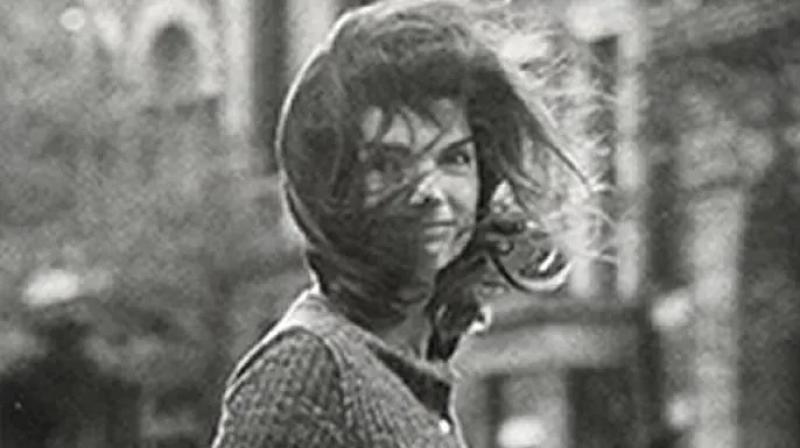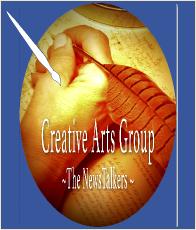These Are the 10 Most Controversial Moments in the History of Photography
By: JOHN ORTVED

These Are the 10 Most Controversial Moments in the History of Photography
When the daguerreotype—the proto-photo—was first popularized in 1839, French poet and critic Charles Baudelaire railed against the form, calling it “deplorable.” And in the 178 years since its invention, the camera—and photographers—have courted controversy and headlines in equal measure.
Here are the 10 most controversial moments in the history of the camera:
1. Death on Camera: Mathew Brady’s Civil War Photographs

Dead Confederate soldiers near Dunker Church following the Battle of Antietam. Photograph by Alexander Gardner
In 1862, at the height of the Civil War , photographer Mathew Brady —whose 1864 portrait of Abraham Lincoln is visible on the $5 bill—organized an exhibition in his New York studio called “The Dead of Antietam .” For the first time, Americans saw images, primarily taken by Brady staffer Alexander Gardner, of the soldiers killed and maimed on the battlefield; the results were shocking. “Mr. Brady has done something to bring home to us the terrible reality and earnestness of war,” wrote The New York Times in October 20, 1862. “If he has not brought bodies and laid them in our dooryards and along the streets, he has done something very like it.”While Brady was not the first war photographer—Roger Fenton of Great Britain and Carol Szathmari of Austria-Hungary captured images of the Crimean War of the 1850s—he and his staff are largely recognized as the fathers of photojournalism.
2. Andy Warhol Booted from 1964 World’s Fair

Andy Warhol’s “13 Most Wanted Men” hanging outside the New York State Pavilion at the 1964 World’s Fair.
The mural Andy Warhol painted for the 1964 World’s Fair — featuring 13 mugshots of wanted criminals, taken from an NYPD booklet—was only up on the exterior of the Philip Johnson-designed New York State Pavilion for two days before it was ordered to be painted over, leaving behind a giant silver rectangle. No one knows for sure why the work was censored. Warhol blamed fair president and NYC Parks Commissioner Robert Moses. Years later, Philip Johnson said the call was made by Governor Nelson Rockefeller. A year later, Warhol claimed he preferred the painted over version. “I don’t believe in anything, so the painting is more me now,” he said. The mural is Warhol’s sole public work.
3. “Windblown Jackie”: The Paparazzi and the End of Privacy

The proto-paparazzi Ron Galella was trailing Jacqueline Kennedy Onassis in October 1971 on New York’s Upper East Side when a car honked its horn. We see Onassis turning to notice, revealing a candid moment, which is the gold for which all paparazzi dig.
Galella made it his mission in life to snap Mrs. Onassis. While he ambushed other celebs (Marlon Brando broke his jaw and knocked out five teeth; Galella says as revenge for his discovering an affair between Onassis and the movie star), he followed Jackie like no other.
While Galella called this snap his “Mona Lisa,” the image captures the debate between what’s news and what’s gossip; what celebrities owe the public and what we own of them; the battle lines between privacy rights and the rights of a photographer.
4. That “Napalm” Photo that Still Courts Controversy

South Vietnamese forces follow after terrified children, including 9-year-old Phan Thi Kim Phuc, center, as they run down Route 1 near Trang Bang after an aerial napalm attack on suspected Viet Cong hiding places. (Credit: Nick Ut/AP Images)
Taken June 8, 1972, the most famous photo of the Vietnam War depicts a 9-year-old Vietnamese girl fleeing a village, Trang Bang, which had just been mistakenly bombed with napalm by North Vietnamese planes. The photographer, Nick Ut, doused the young girl, Phan Thi Kim Phuc, in water before transporting her to an American center for medical attention. The photo’s effects were immediate and wide-reaching. President Nixon was so worried about its effects, he speculated that it was a fake, created to bolster anti-war sentiment.
But 40 years after it was published worldwide and run up against many newspapers’ and magazines’ publishing standards, the photo faced similar obstacles when Facebook briefly removed it, arguing that its nudity defied their terms of use.
5. Robert Mapplethorpe Goes to Trial

Photograph from Robert Mapplethorpe’s exhibit, “The Perfect Moment.”
In April 1990, Hamilton County prosecutors charged the Contemporary Arts Center of Cincinnati with obscenity for showing a collection of Robert Mapplethorpe’s work—included images of S/M and gay culture—entitled, “The Perfect Moment.” It was the first time in the nation’s history that a museum had been taken to criminal court for works it had chosen to display.
At the trial, which occurred four months after the exhibit had closed, the defense had the exhibit’s curator, Janet Kardon, analyze the three works (which depicted explicit material, like a man with a bullwhip in his anus) only in terms of their formalistic properties: light, composition and form. It took the jurors all of two hours to acquit both defendants.
Predictably, the works garnered record-breaking attendance and more than 80,000 visitors to the museum.
6. Photoshop and Blurred Lines: Can it Still Be Called Photography?

Photos have been edited ever since developers in dark rooms figured out how to burn and dodge to lighten or darken images, but Photoshop, launched by Adobe in 1990, has become photography’s best friend and bête noire.
While the most infamous instance occurred in 1994, when Time magazine darkened O.J. Simpson ’s skin on its cover, retouching is par for the course in fashion magazines, where it can easily slip from “gloss” to “re-invention.” When Kate Winslet appeared looking supermodel-thin on the cover of British GQ in 2003, she commented, “The retouching is excessive. I do not look like that and more importantly I don’t desire to look like that.”
Recently, Nicki Minaj, Kim Kardashian West, Kerry Washington and Zendaya have all called out magazines for the body-shaming and racism involved in excessive retouching.
7. A Female Photographer Rules the Roost

Fine art has always been a boys’ club, but in May 2011, Cindy Sherman became the most expensive photographer in the world. Her work, “Untitled #96” (1981)—a self-portrait of the artist posing as a teenage girl, lying on the floor—sold at Christie’s for $3,890,500. The next year, for her MoMA retrospective The New York Times credited Sherman with “Taking photography out of a ghetto and putting it on the same firm fine-art footing as painting and sculpture.”
8. The Digital Revolution and the Shock of Abu Ghraib

Digital cameras, especially as they made their way into phones, turned everyone into a photographer, editor, journalist, pornographer and whistleblower. Nowhere was this more apparent than in April 2004, when the abuses at Abu Ghraib prison—discovered on the camera of a guard by a fellow soldier—were revealed to the public through leaked photos.
The abuses drew domestic and international condemnation of abuses during the Iraq War , and also proved a boon for terrorists; Osama bin Laden would reference the images specifically in a 2010 essay printed in Inspire, Al Qaeda’s recruitment magazine.
9. Photo Update by Richard Prince

A master of appropriation, Richard Prince has been commenting on others’ work since his “Cowboys” series, beginning in 1980, where the artist photographed packs of Marlboro cigarettes (with images shot by Sam Abell), removed the text, and reframed them as high art. His work, collected by museums like the Guggenheim, Whitney and Smithsonian, is among the most expensive for a living artist.
He provoked an uproar in 2014 when he showed “New Portraits” at the Gagosian gallery in New York. Comprising inkjet on canvas images from Instagram of attractive women, like singer Sky Ferreira and model Candice Swanepoel, the works sold for $100,000. The show pulled into question not only what photography could be in the digital age, but issues of fair use, as subjects took issue with the artist using and then selling their personal images. Prince laughed off the controversy with a tweet .
10. Celebgate
Celebrities woke up to a new digital reality on August 31, 2014, when nearly 500 images—featuring celebrities, including Jennifer Lawrence, Amber Heard, Olivia Wilde and Anna Kendrick in various states of undress and posing in sexual situations—were posted online for the world to see.
Thought to be stolen from Apple’s iCloud, they first appeared on the message board 4Chan, but were quickly disseminated to more trafficked sites like Reddit. The FBI opened an investigation, and one hacker (there are thought to be many involved), 36-year-old Ryan Collins of Lancaster, Pennsylvania, was sentenced to 18 months in prison. But there was no way to put the genie back in the bottle. The photo leak was a wake-up call: Old notions of privacy and security have quickly become history.




I went through my photos trying to find something that could conceivably be considered a controversial moment, and the closest thing I could find was this one that I took at the ancient village of Langmei, not far from Nanning in Guanxi Autonomous Region. Obviously the woman, who is quite elderly and living in a meagre dwelling with her chickens, was not happy that I was taking her photo. I think what went through my mind at the time was 'Hey, there's someone who's older than me.'
I wonder if anyone else has a photo taken at a controversial moment in time.
This is a great example of Genre Art … whether or not deemed "controversial".
Challenger explosion:
I was watching it on TV when that happened. That was an unbelievably excruciating incident that I'm sure left a scar on the minds of millions of children who were watching as a school project.
The day this happened, I was sitting in the front lobby of the small medical clinic I worked in with a group of coworkers at the Naval Communications Station Philippines at San Miguel in the Republic of The Philippines. I remember to this day how we all sat there with our mouths hanging open in a state of shock!
Yep.
Yep, like 9-11 or the moon landing. .Most of us remember exactly where we were for moments in time like that.
The whole country falls into a kind of state of shock when things like that happen.
Great subject, Buzz! Will check my data base for controversial moment later today.
One photo that will always be etched into my memory is Baylee Almon's lifeless and mangled body being carried from the OKC bombing by a fireman. I had read later that the photo so upset the photographer that he never took another picture again.
Thank you for that, but now I am in total tears, something I don't need right now. I do appreciate your effort.
Tragic.